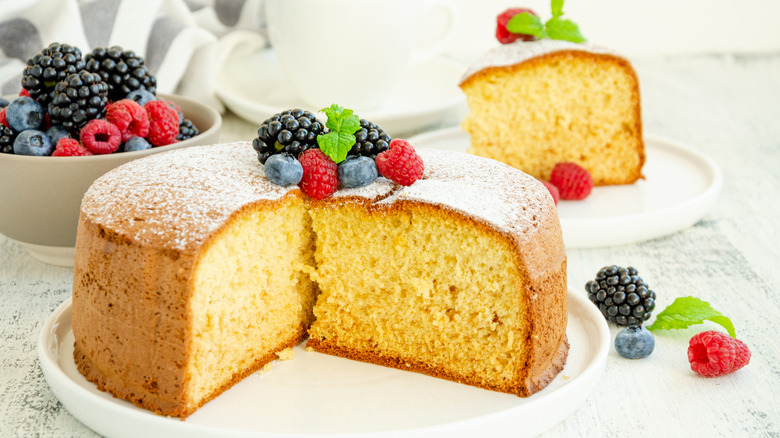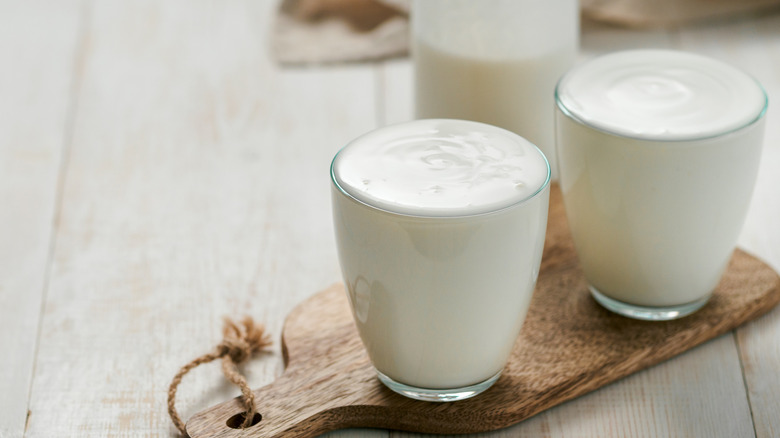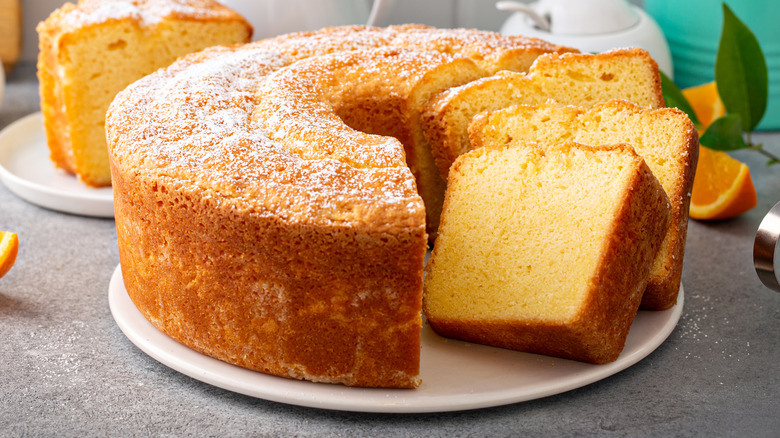Buttermilk Is The Tangy Way To Truly Elevate A Classic Vanilla Cake
One of the most important recipes in any baker's toolkit is a classic vanilla cake. On its own, vanilla cake is a timeless showstopper, and the most popular wedding cake flavor year after year. It's also a delicious blank slate that has nearly infinite possibilities considering the many frostings and fillings it can carry. With a solid vanilla cake recipe in your repertoire, you can also use it to make all kinds of other flavors with just a few extra ingredients.
Plain vanilla cake on its own can be a little one-note, however — unless you add a little buttermilk to the batter. Just as it brings a little something extra to biscuits, pancakes, and carrot cake, buttermilk in a vanilla cake creates a tangy and more complex flavor. Whether you're making a vanilla cake from scratch, or doctoring up a boxed mix, swap some buttermilk for the regular milk in the recipe and you'll get a next-level vanilla cake that's perfectly balanced and anything but boring.
The science of baking with buttermilk
If you've ever tasted plain buttermilk from the container, you'll find that it's a bit sour and has a texture similar to light cream or half and half. The sourness comes from lactic acid-producing bacteria, which ferments the lactose in dairy milk. This acidity won't translate into a sour-tasting vanilla cake, however. Instead, it will balance out the sweetness of the sugar with a rich and complex tanginess.
Because it's acidic, buttermilk also reacts with alkaline baking soda. This chemical reaction can add lift and create a light, airy texture. The acidity of buttermilk can also break down protein in the flour, which will make the crumb of your cake more tender. This is why buttermilk is so popular in biscuit recipes, where dense doughs can use the extra lift. It's also used in dense bakes like carrot and pound cake to add moisture and help lighten the texture.
Buttermilk substitutes
Most grocery stores carry buttermilk, but you might have to look carefully because they usually only carry one brand and it can be easy to overlook. If you can't find buttermilk at your local market, you can still get the benefits of its baking magic by making a version of it yourself with milk and vinegar or lemon juice. Add around a tablespoon of lemon juice or white vinegar to a cup of milk and let it sit for 5 to 10 minutes. The acid in the vinegar or juice will slightly curdle the milk. This trick won't give you the full flavor of store-bought cultured buttermilk, but you will get many of the same baking benefits with your homemade mixture as you would using commercial ones.
If you're ready to start experimenting, try using buttermilk instead of water or milk in your vanilla cake recipe. If you're not a scratch baker but want to give buttermilk a try, use it in a pre-made vanilla cake mix instead of water. We'll bet nobody will be able to tell that it came from a box.


